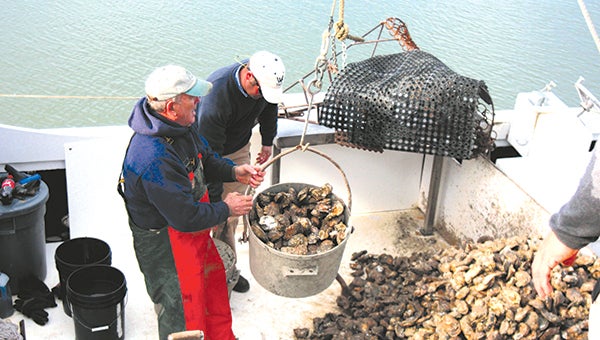Oyster harvest grows
Published 9:04 pm Monday, November 16, 2015
Virginia’s oystermen harvested more than 650,000 bushels of oysters in 2014, up 24 percent since last year and the best harvest in nearly 30 years.
“This year’s harvest appears as good, if not better,” Ben Johnson, owner of Johnson and Sons Seafood in Eclipse, said on Monday. “It’s much better than what was originally forecast.”
The harvest season in the James River opened on Oct. 1.
Johnson and Sons leases 2,500 to 3,000 acres of water bottoms through the Virginia Marine Resources Commission to use as oyster beds. Statewide, VMRC leases out more than 121,000 acres of state-owned water bottoms for oysters, the highest acreage since the 1960s, according to the Virginia Department of Agriculture and Consumer Services.
This year’s harvest is the best since 1986, when Virginia harvested 780,947 bushels. While oyster harvests have been making a gradual comeback over the past decade, the state remains below its historical high of 4 million bushels in 1958.
The dockside value of the oyster harvest increased to $33.8 million last year, up from $22.2 million in 2013, according to figures released last week by Gov. Terry McAuliffe. Last year’s harvest had a ripple effect on the economy, generating an estimated $89 million in economic value for the state, according to McAuliffe.
The state attributes the success over the past 10 years to comprehensive fisheries management programs, effective private-sector investments and good natural reproduction several years ago.
The VMRC manages the oyster stocks through rotational oyster harvest areas and by spreading fossil oyster shells mined annually from beneath the James River on public oyster grounds in its oyster replenishment program. These fossil shells become home for naturally occurring oyster larvae that attach to them during spawning and grow to form new adult oysters that will reach market size in roughly three years.
Johnson says he believes the state’s replenishment and management programs are getting too much credit for the surge of bumper oyster harvests in recent years.
“There is nothing they have done that has accomplished where we are right now,” Johnson said. “It’s nothing but Mother Nature … and sooner or later, next year or in 10 years, it will end. It comes in cycles.”
Johnson said he frequently doesn’t agree with the science behind replenishment and management plans and that he believes taxpayers’ money could be put to better use.
“I think the state too heavily regulates the oyster industry,” Johnson said. Decisions like cutting bushel limits and regulating the number of days oystermen can negatively impact the industry’s potential to grow, he added.






